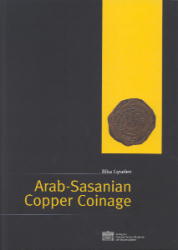
This volume is associated with the research project “Sylloge Nummorum Sysanidorum” carried out by the Österreichische Akademie der Wissenschaften and the
French Centre National de la Recherche Scientifique. It is a survey of copper coinage minted during the first hundred and fifty years of Arabic domination in regions
previously under Sasanian rule. The value of Arab-Sasanian copper coinage lies in the variety of its iconography and in the content of the inscriptions which
provide evidence of the political and cultural fermentation in regions previously under Sasanian hegemony after the Arab conquest. The Arab-Sasanian copper coins
serve as evidence to the determination of the Iranians to retain signs of their cultural identity and the desire of the Arabs to articulate their Muslim faith in a region
where an older cultural and religious ideology remains strong.
The available corpus contains approximately 330 coins from of more than a hundred different types can be distinguished.These are described and illustrated in
the catalogue, which is supplemented by a synopsis in order to give a clear picture of the iconographic repertoire of these coin issues.
Some of the coin types are based on monetary prototypes from late Sasanian and Ara-Sasanian, Byzantine and Umayyad silver coinage. These coins are discussed in the first chapter whereas the second and third chapters deal with those coins which have no specific monetary prototype examined. These latter examples make up the majority of the coins minted after the monetary reform of the Umayyad caliph 'Abd al-Malik' which introduced a purely epigraphic type in Arabic.
The Arab-Sasanian copper coinage testifies to the long lasting influence of the type featuring the bust of the Sasanian king Khusro II and to the persistence of a strong Iranian character. Despite this, the existence of the standing caliph type of Umayyad coinage testifies to Iranian participation in the creation of a general Arab-Islamic iconography. However, in the case of some Arabic-Islamic motifs, the Arab-Sasanian copper coinage offers the sole evidence.
2009,
978-3-7001-2893-9
978-3-7001-8816-2
208 Seiten, 15 Tafeln,
29,7x21cm, broschiert